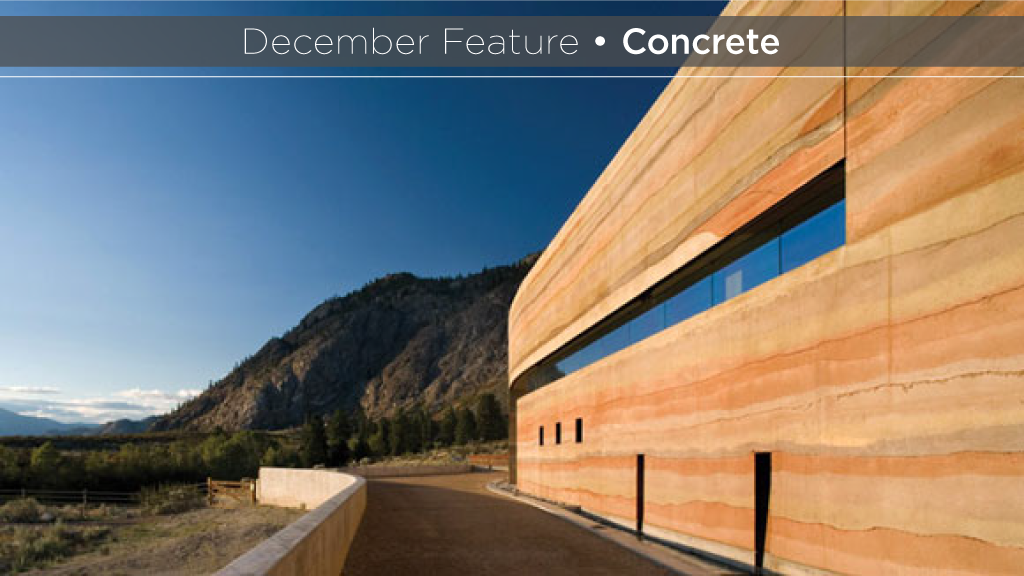Horse hair, beer, urine, tree bark, sugar — all have been used in ancient concrete mixes to strengthen the enduring building material.
Two-thousand-year-old Roman aqueducts, thousand-year-old Mayan temples and the 2,200-year-old Great Wall of China were all made with mixtures of limestone, other earthen elements and varied, local ingredients.
Today, fly ash, steel fibres, glass and recycled plastic are being tested and used in third millennia concrete mixes.
“We’re learning from the past,” says Rishi Gupta, a civil engineering professor at the University of Victoria. “We now have modern versions.”
For over two decades, Gupta has been researching ways to strengthen concrete, often examining past practices. Today, he’s focussed on two distinct methods: Fibre-reinforced concrete and rammed earth (RE).
Builders are well aware of the pitfalls around 20th century concrete, which may have a lifespan of 50 to 100 years.
In the mid-19th century, the addition of steel rebar to reinforce concrete was a great marriage but add salt and the breakdown that occurs in settings like parking garages and roads quickly becomes evident.
Before metal made its way into concrete, animal hair, often horse hair, was used. The hair acted as a fibre and improved concrete by bridging across cracks, similar to staples, Gupta says.
Today, natural and manufactured items are replacing animal hair.

At the University of Victoria, Gupta and his team have been involved in the Idea to Innovation company. One project is the collection of plastic waste from recyclers, initially milk jugs, that is converted into plastic fibres. The fibres are added to concrete.
The concrete has already been successfully used at a portion of sidewalk outside Victoria’s Crystal Pool.
BC Transit and the University of Victoria have also made use of concrete with carbon fibres.
Steel has traditionally been used in placements like sidewalks, but research is showing that it’s not the best.
“The addition of (plastic) fibres is known to reduce cracking big time,” Gupta says.
Along with synthetic fibres, like polypropylene and polyethylene (and HDPE), steel fibres are being used. But the steel is not the rebar of times past. Today, small strands, some the diameter of tin wire and two-inch-long pieces are used.
As well, cellulose from wood bark, pulp and paper waste, wood ash from Prince George’s forest industry and fly ash from coal burning are all making their way into concrete mixes.
Much like cooking, a batch of concrete today becomes a blend.
“In every bucket of concrete, add a pinch of fibre,” Gupta says.
There are limitations though.
In the case of a 50-storey building, steel would not be removed.
“It’s (fibre) great for flat work,” Gupta says.
In the case of fire though, a National Research Council study found that at temperatures 400 C and up, concrete with steel explodes because there is no place for moisture to escape, Gupta says.
Synthetic fibres, meanwhile, provide space for the moisture to disperse.
Gupta’s second area of expertise is RE construction, which involves compacting earth into a formwork. The formwork allows the RE wall to retain structural integrity while drying. Repetitive placement of earth, rammed with a manual or pneumatic rammer, is done until the desired height of a wall is reached. Typically, the RE is placed in layers.
The composition of the earth can vary, because it’s location-related. But it should not have organic content. Sufficient binder is required between the grains of silt, sand, gravels and small stones. Lime or cement can be added to bolster strength.
RE construction has been used in China since around 3000 BC, was broadly used in Europe in the 18th and 19th centuries and was first used in North America in 1556 in Florida, when a soil and seashell mix was compacted in heavy formwork.
Today, Gupta says modern RE has added cement to provide stability. The percentage of cement is dependent on the local soil.
“Ideally, you would dig out the soil to build the foundation and use if for walls,” Gupta says.
He likens the creation of RE to the 100 Mile Diet, using local ingredients from within 100 miles to produce a finished product.
And because the RE is manually removed from the form each time, no two sections look the same.
At the University of Victoria, the well-known First Peoples House has RE walls.
The Van Dusen Visitor Centre in Vancouver features two RE walls made with soil, chalk, lime and pigment to create sinuous, earth-tone walls.
Other B.C. locations that are ramming earth to make structures include a pump station/washroom on the Gorge Waterway in Victoria and more than a dozen homes on Salt Spring Island, Gupta says.
At the Osoyoos Indian Band Reservation, the Nk’Mip Desert Cultural Centre is the largest insulated RE wall in the world at 80 metres long, 5.5 metres high and 600 millimetres thick. The thermal resistance is R33, there are few control joints and very minimal non-structural cracking.
Gupta says RE construction would be well-suited to remote Indigenous communities and perhaps a better option than current housing choices.
“When rammed earth is used, you get architectural marvels,” Gupta says.





Recent Comments
comments for this post are closed